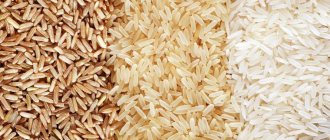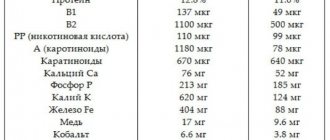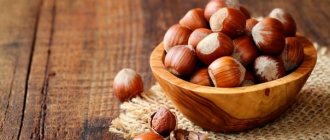There is good news for you: you can eat bread on a diet! It’s so tasty, and also healthy. Read the article and find out what kind of bread and in what quantity you can and should eat to lose weight and be healthy.
- Links to authoritative sources
Author: Kristina Lobanovskaya, doctor, practicing nutritionist Article updated: 12/28/2019
Ask a Question
Almost any diet involves giving up all flour products. For this reason, there is a very common stereotype that bread is the enemy of slimness. This is only partly true. After all, different varieties can bring both harm and benefit to the body. If you find it difficult to give up consuming bread, you don’t have to do it at all. You just need to figure out which type is healthy and in what quantity you can eat it without damaging your figure.
Benefit
It should be remembered that not all flour is equally harmful. For example, unsweetened baked goods made from wholemeal flour are a source of fiber that is beneficial for the digestive system. But you always need to know when to stop. After all, the abuse of even healthy products can cause significant harm.
- Bran and rye are a source of carbohydrates with a low glycemic index. These are healthy carbohydrates that provide a long-lasting feeling of satiety and stimulate brain activity.
- White is rich in protein, iron, phosphorus and potassium.
- Eating black has a positive effect on the functioning of the nervous system, prevents fatigue, and improves the condition of the skin, hair and nails.
- Allows you to remove toxins, heavy metal salts and radionuclides.
- By eating bran or rye bread, you will significantly reduce the total number of calories you consume, as you will feel full much faster and eat less. You should completely avoid confectionery products and sugar (the combination, beloved by many, with honey or jam is prohibited). In addition, the calorie content of bread is much lower than, for example, shortbread or chocolate. Eat it with pieces of lean meat and fresh vegetables. For example, 25 g of bran bread + 20 g of boiled chicken meat + cucumber is an ideal snack between breakfast and lunch.
With bran
This bread is baked from wholemeal flour, made from healthy unrefined grains (along with the shell and germ). This product is the undoubted leader in a healthy diet, as it is rich in nicotinic acid, a substance that protects the body from gastrointestinal diseases and prevents atherosclerosis. The calorie content of bread with bran is 227 kcal per 100 g.
Harm
Store-bought bread made from premium wheat flour has virtually no beneficial properties for the body. The fact is that in the process of producing such flour, “ballast substances” are removed from cereals - the flower shell (bran), the grain germ (a source of vitamin E) and the aleurone layer of the grain (a source of protein valuable for the body). Then it is bleached so that baked goods from it have an attractive appearance. The result is refined flour with a high starch content, which contributes to the appearance of extra pounds. In addition, factory-made bread made from such flour contains various nutritional additives. These are preservatives (for example, sorbic acid), flavorings, emulsifiers and disintegrants. It is likely that you will eat a lot of this bread, but since it contains harmful carbohydrates with a high glycemic index, you will not feel full. And this is a direct path to extra pounds.
Another point is yeast. Yeast fungi disrupt the intestinal microflora, which impairs digestion and provokes putrefactive processes. In addition, they interfere with the absorption of vitamins and microelements necessary for the body. Under such conditions, toxins accumulate that can provoke many serious diseases (gastritis, seborrhea, gallstones).
When choosing bread in the store, be sure to pay attention to its composition. If you watch your diet and care about the health of your family, make a choice in favor of natural foods.
How much does a piece of bread weigh?
In order to accurately determine the weight of the piece you cut, you can use a kitchen scale. You can use a simpler method of calculation. For example, a loaf of “Borodinsky” weighs 350 g. If you cut it into 10 parts, you will get 10 slices of 35 g each, if you cut it into 20, the weight of each piece will be 17.5 g. Before cutting, conditionally divide the loaf into equal parts. A piece of bread 1.5 cm thick weighs 25-30 g.
Toast bread
Toast bread tastes sweeter than regular bread, and is also higher in calories - 290 kcal per 100 g of product. The harm of this product lies in the content of artificial egg white, milk protein, gluten and enzymes. There is very little fiber and nutrients in it, and unprocessed proteins can provoke tumors.
Energy value
To get rid of excess weight and stay in good physical shape, you don’t have to go on a diet with a meager diet. It is enough to monitor the number of calories consumed and expended. Do not give up bread if without it your nutrition will seem incomplete and every meal will seem incomplete. After all, this can provoke psychological discomfort, which will negatively affect health. You just need to determine the optimal amount of calories and follow this norm.
Corn bread
Due to the fact that corn grits undergo fewer stages of sorting and purification, it retains more vitamins and structural compounds contained in the shell. As a result, absorption occurs more completely, and the body as a whole receives significantly more nutrients. Calorie content - 266 calories per 100 g.
Calorie content of varieties
Now let's talk about the calorie content of different varieties.
White
100 g of white bread contains 8.12 g of protein, 2.11 g of fat and 50.19 g of carbohydrates. For example, the calorie content of a loaf is 260 kcal per 100 g. 100 g of a baguette contains 262 kcal, and a white wheat baguette with longitudinal cuts contains 242 kcal per 100 g.
Grey
Contains both rye and wheat flour in different proportions. Nutritional value: 9.40 g of proteins, 2.79 g of fat and 49.25 g of carbohydrates per 100 g. Calorie content - 262 kcal per 100 g. In rye-wheat “Darnitsky” bread 206 kcal per 100 g, in “Ukrainian” - 198 kcal.
Black
Black contains a full set of amino acids essential for the body. Among them is lysine, which is necessary for the absorption of proteins, full metabolism and the production of antibodies of the immune system. Consumption of bread made from rye flour promotes the rapid removal of carcinogens and metabolic products from the body. However, use is not recommended for high acidity, gastritis and ulcers. 100 g of rye bread without additives contains 6.90 g of protein, 1.30 g of fat and 40.9 g of carbohydrates. The calorie content of black Borodinsky is 202 kcal.
"8 grains"
The composition includes eight types of flour from eight grains. It contains vitamins (B1, B2, B5, B6, B9, B12, E) and useful substances such as magnesium, calcium, potassium, zinc, phosphorus, iodine, iron and sodium. Calorie content of 8-grain bread is 269 kcal per 100 g. Nutritional value is 13.7 g of protein, 5.2 g of fat and 42 g of carbohydrates.
With bran
Bran contains vitamins B1, B6, B12, E, PP, zinc, iron and phosphorus. Its consumption has a positive effect on the functioning of the digestive, cardiovascular and nervous systems. Bran is an effective adsorbent. They help eliminate toxins and reduce cholesterol levels in the blood. The energy value of bread with bran is 227 kcal per 100 g. Nutritional value is 7.5 g of proteins, 1.3 g of fat and 45.2 g of carbohydrates per 100 g of product.
Grain
The cereal contains whole cereal grains. Therefore, almost all vitamins (B, A, E, PP) and microelements (potassium, sodium, molybdenum, phosphorus, iodine, iron, calcium) that are present in the grain shell are preserved in it. Due to the high content of dietary fiber, food consumption has a beneficial effect on the activity of the gastrointestinal tract. Regular consumption prevents the development of atherosclerotic changes in blood vessels and is a prevention of diabetes mellitus. The calorie content of grain bread, depending on the variety, is 220 - 250 kcal per 100 g of product.
Yeast-free
Due to the fact that the cooking principle excludes the use of baker's yeast, it is considered the most healthy and, moreover, the lowest in calories. Its consumption is a prevention of diseases of the gastrointestinal tract, as it helps to normalize metabolic and digestive processes. There are many types of yeast-free bread. You can find it on the supermarket shelf or prepare it yourself. In this case, the calorie content will depend on the ingredients used. The calorie content of yeast-free bread is 150 - 180 kcal per 100 g. If you cook it yourself and add, for example, sesame seeds or seeds, the energy value will be higher.
Toast
Bread intended for toasting is slightly sweeter than regular white bread and has a higher calorie content. Per 100 g of product - 290 kcal. Nutritional value: 7.3 g protein, 3.9 g fat and 52.5 g carbohydrates. Due to frying in a toaster, the mass of the piece changes slightly (due to loss of moisture), but not its calorie content. So, the calorie content of toast weighing 15 g will be 40 - 45 calories, toast made from black bread - about 200 calories per 100 g, or 30 for one piece of toast weighing 15 g.
Corn
Corn contains a large amount of fiber, which prevents the absorption of excess cholesterol and protects the cardiovascular system. Vitamins (A, B1, B2, C) and mineral components (sodium, potassium, calcium, magnesium, phosphorus), which are part of corn flour, normalize metabolic processes. It is useful for mild forms of diabetes, diseases of the pancreas and intestines. Nutritional value – 6.70 g of protein, 7.10 g of fat and 43.50 g of carbohydrates per 100 g of product. Calorie content – 266 calories.
Fruit
Dates, dried apricots, raisins, figs, oranges, nuts, etc. are added to this one. To prepare fruit, rye flour is traditionally used. This product is suitable for snacking between main meals. 100 g contains 7.80 g of protein, 7.75 g of fat and 53.80 g of carbohydrates. Calorie content of fruit bread is 325 kcal. When preparing yourself, consider the calorie content of the ingredients used.
Dried
Dried bread is healthier for the digestive tract because it is much less sticky than fresh bread. In addition, crackers are an excellent addition to hot liquid dishes. The calorie content of dried and fresh bread does not differ, since the drying process - both natural and in the oven - occurs without adding any additional ingredients. Thus, the calorie content of 100 g of white bread crackers is 260 - 330 calories per 100 g, gray bread crackers are 200 - 270 calories per 100 g, rye crackers are 170 - 220 calories per 100 g.
Fried
The calorie content of fried bread depends, firstly, on what kind of bread and how much you use. And secondly, it depends on what you fry it on. For example, if you fry a slice of wheat bread (weighing 30 g - 72 calories) in butter (3 g - 23 calories), its calorie content will be 105 calories. Good option for breakfast.
With butter
To determine the calorie content of a sandwich with butter, you need to know the exact amount of ingredients, as well as their energy value. For example, a piece of “Borodinsky” bread weighing 25 g is 52 calories, 4 g of butter is about 30 (be sure to check the calorie content on the package). That is, the calorie content of rye bread with butter in such proportions will be 82 calories.
8 grain bread
The bread contains eight types of flour from eight grains. It contains a lot of vitamins and dietary fiber, which regulate intestinal function, adsorb and remove toxins from the body, slow down the absorption of carbohydrates, resulting in normalization of insulin and blood glucose levels. Calorie content of 8-grain bread is 269 kcal per 100 g.
How to eat properly
- Try not to eat bread while it is hot, as the increased stickiness will make it very difficult to digest. This can cause exacerbation of gastritis, upset, or constipation. If you suffer from diseases of the gastrointestinal tract, eat it slightly dried. It has less of a juice effect (this is dangerous with high acidity) compared to fresh.
- Combination with potatoes is not recommended at all, as these products have a high starch content.
- It is better to eat black with meat, fish, cottage cheese and butter.
- Pairs well with fresh vegetables.
- Don't eat moldy bread. The fact is that mold contains more than a hundred toxic compounds that can cause serious illnesses, including cancer. Therefore, it is better to throw away any moldy products immediately.
- To avoid gaining weight, eat no more than 100 g of rye and rye-wheat bread per day. White - no more than 80 g per day.
Yeast-free bread
In the pre-industrial era, bread was risen by leavening it with fruit, hops or sour milk. Modern bread is baked using yeast and baking powder, which spoil the functioning of the gastrointestinal tract. The yeast-free version is considered the most healthy and also the lowest in calories - only 150-180 kcal per 100 g.
The whole truth about yeast
Who are they? To be precise, these are single-celled fungi that live everywhere, including in ourselves. There are a lot of different conversations about them, from rumors to horror stories.
Among the most famous is the story of thermophilic yeast. There is talk that this is a biological weapon that was invented by geneticists; they do not die at high temperatures (and therefore when baking bread), reproduce well and cause great harm to the body.
Others say that this is all fiction and that there really is no killer yeast. So many people, so many opinions. This topic is actually a big one, and if you are interested in it, we can talk about it in another article - write your thoughts and wishes in the comments.
For my part, I am inclined to believe that thermophilic yeast is harmful to the human body.
Here, for example, is a video about what such yeast is:
And here is what the famous blogger and person I respect, Roman Milovanov, says on this topic. He tested many aspects of nutrition on himself.
We continue the conversation and are now looking for yeast-free bread.
How to do without fermentation
Many people are very afraid of the fermentation that yeast supposedly causes in the stomach, and therefore are preoccupied with searching for healthy bread prepared without their participation.
They say that this is Jewish matzah, Armenian lavash and products with leaven dressing.
But our grandmothers used to bake yeast-free bread. No one was selling yeast, and there wasn’t much money. And those who had more patience prepared sourdough, often with hops, potatoes or sour milk.
It's simple!
- In order for the dough to rise and the bread to be fluffy and beautiful, you need yeast and fungi.
- Available products were used as such natural yeasts
- Ordinary (natural) fungi die already at a temperature of 50 degrees, and during the baking process the temperature inside the loaf reaches 98 degrees.
Healthy sourdough
Fans of healthy eating believe that sourdough (in particular, intoxicated sourdough) is the very way that helps get rid of the harmful effects of industrial chemicals. After all, industrial technologies for preparing yeast are very different from homemade ones, and not for the better.
They work faster, yes - that's what they were invented for: mass production of bread. But this does not mean that there is no alternative to them.
Nowadays, sourdough is most often made from flour and rye malt (a mixture of sprouted and ground grains) or simply from rye flour. Judging by reviews on the Internet, there are many recipes for sourdough starters, and the finished one can be stored for a long time in a cold place.
And at the right time, by breaking off a piece from it and adding a little water and flour, you can bake a lush, rosy loaf, healthy in all respects.
Crackers and croutons
Bread in this form does not stimulate the intestines, but, on the contrary, strengthens it. Dried bread has less stickiness and is more beneficial for the gastrointestinal tract than fresh bread. The calorie content of dried and fresh bread is the same. The energy value depends on what variety you use and what you fry it on: a slice of wheat bread fried in butter will bring you 105 kcal.











